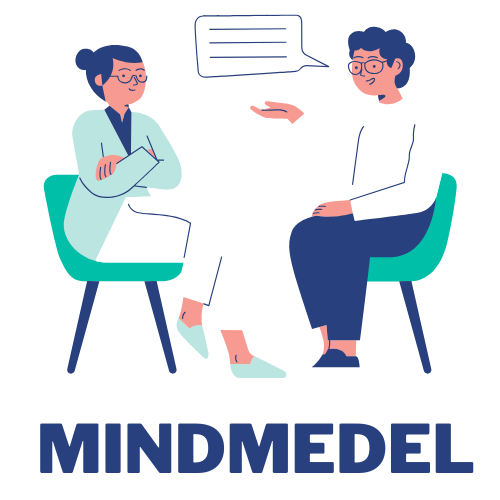Decoding Our Minds: Understanding the Cognitive Bias Codex
Ever feel like your brain is playing tricks on you? It probably is! Every day, we make decisions based on mental shortcuts that help us process information quickly. While these shortcuts, known as heuristics, are useful, they can also lead to systematic thinking errors called cognitive biases. Understanding these biases is essential for better decision-making, critical thinking, and problem-solving.
The Cognitive Bias Codex is a visual tool that organizes these biases into categories, making it easier to identify and understand them. Whether you’re a student, professional, investor, or marketer, this codex is a valuable resource for improving judgment and recognizing flawed thinking patterns.
Key Takeaways
- The Cognitive Bias Codex organizes biases into a structured format for better understanding.
- Our minds rely on heuristics, which can sometimes lead to flawed thinking.
- Learning about common cognitive biases can help improve decision-making.
- The Cognitive Bias Codex Chart is a valuable resource for students, marketers, investors, and professionals.
- Awareness of biases can help us overcome cognitive errors and think more critically.
What is the Cognitive Bias Codex?
The Cognitive Bias Codex is a framework that organizes over 180 biases into meaningful categories. It visually represents how biases influence our perception, interpretation, and decision-making. This tool is often presented as a Cognitive Bias Periodic Table or an infographic, helping users recognize different biases in various situations.
Breaking Down the Codex
- The Cognitive Bias Codex Image visually categorizes biases, making them easier to navigate.
- It includes both heuristics and biases, though they are often grouped together.
- Heuristics vs. Biases: While heuristics are mental shortcuts that speed up thinking, biases are errors that result from these shortcuts.
Why is the Cognitive Bias Codex Important?
Cognitive biases affect how we perceive information, make decisions, and interact with others. Recognizing these biases can help us:
- Make more rational decisions.
- Improve critical thinking and problem-solving.
- Enhance communication and persuasion skills.
The Four Major Categories in the Cognitive Bias Codex
Cognitive biases are mental shortcuts that influence our perception, decision-making, and memory. The Cognitive Bias Codex categorizes these biases into four major groups:
Too Much Information (Biases That Affect Attention & Perception)
Our brains constantly receive a flood of information, but we can only focus on a limited amount. To manage this, we unconsciously filter what we pay attention to, often leading to biased perceptions.
- Confirmation Bias: We actively seek out and remember information that supports our existing beliefs while ignoring or dismissing contradictory evidence. This can lead to one-sided thinking and reinforce misconceptions.
- Availability Heuristic: We judge the likelihood of an event based on how easily examples come to mind. For instance, after hearing news about plane crashes, people may overestimate their frequency, even though car accidents are far more common.
- Anchoring Bias: Our decisions are heavily influenced by the first piece of information we receive (the “anchor”). For example, if a car is initially priced at $50,000 and later discounted to $40,000, we may perceive it as a great deal, even if the fair price is actually lower.
Not Enough Meaning (Biases That Create Interpretations)
When faced with incomplete or complex information, our minds try to fill in the gaps by making assumptions, sometimes leading to inaccurate conclusions.
- Halo Effect: A single positive trait (such as physical attractiveness or intelligence) influences our overall perception of a person. For example, we might assume a well-dressed person is also competent, even without evidence.
- Narrative Fallacy: We naturally seek patterns and create stories to explain random or unrelated events. This can lead to oversimplified explanations that ignore the true complexity of a situation.
- Self-Serving Bias: We attribute our successes to our own abilities and hard work but blame external factors for our failures. For instance, a student might credit their intelligence for a good grade but blame a “bad teacher” for a poor grade.
Need to Act Fast (Biases That Influence Decisions)
Since we don’t always have time to analyze every decision in detail, we rely on quick mental shortcuts. However, these shortcuts can sometimes lead to poor decision-making.
- Overconfidence Bias: We tend to overestimate our knowledge, skills, or ability to predict future events. This can lead to risky decisions, such as an investor believing they can “beat the market” despite statistical evidence to the contrary.
- Loss Aversion: The pain of losing something is psychologically stronger than the pleasure of gaining something of equal value. This explains why people hold onto bad investments for too long or why businesses use “limited-time offers” to pressure customers.
- Bandwagon Effect: We adopt beliefs or behaviors simply because many others are doing the same. This bias plays a significant role in trends, political movements, and even financial bubbles, where people invest in stocks just because “everyone else is doing it.”
What Should We Remember? (Biases in Memory & Learning)
Memory is not a perfect recording of reality; it is reconstructed and influenced by various biases.
- Serial Position Effect: We remember the first (primacy effect) and last (recency effect) items in a list better than those in the middle. This is why politicians place key messages at the beginning and end of their speeches.
- Hindsight Bias: After an event has occurred, we believe it was more predictable than it actually was. This can lead to overconfidence in our ability to predict future outcomes.
- False Consensus Effect: We assume that more people share our opinions, beliefs, and behaviors than they actually do. For example, someone who dislikes a popular movie may believe “most people” feel the same way, even when reviews suggest otherwise.
Common Cognitive Biases and Their Real-World Examples
| Cognitive Bias | Definition | Example in Everyday Life |
| Confirmation Bias | Seeking information that aligns with our beliefs | Favoring news that supports your political views |
| Anchoring Bias | Relying on initial information too much | A car’s first price setting expectations in negotiation |
| Availability Heuristic | Judging likelihood based on easily recalled examples | Overestimating plane crash risks after media coverage |
| Halo Effect | Judging based on one positive trait | Thinking an attractive person is also highly competent |
| Bandwagon Effect | Adopting ideas just because others do | Buying a stock just because everyone else is |
How Cognitive Biases Affect Different Areas of Life
Cognitive Bias in Psychology & Critical Thinking
- Studying biases helps psychologists understand human perception and behavior.
- Cognitive Bias Training can improve logical reasoning and decision-making skills.
Cognitive Bias in Decision-Making
- Biases impact personal and professional choices.
- Common cognitive biases in the workplace can lead to poor hiring decisions or inefficient strategies.
Cognitive Bias in Marketing and Sales
- Advertisers use biases to influence consumer behavior.
- Cognitive bias in investing explains why people make irrational investment decisions.
Cognitive Bias Codex for Students
- Helps students improve critical thinking and academic performance.
- Teachers can use it to educate students on logical reasoning and bias recognition.
How to Identify and Overcome Cognitive Biases
How to Identify Cognitive Biases in Yourself
- Self-reflect and question your own thinking patterns.
- Seek diverse perspectives to challenge biases.
- Use tools like the Cognitive Bias Chart to recognize bias in real-time.
How to Avoid Cognitive Biases
- Pause before making decisions to assess biases.
- Fact-check information using reliable sources.
- Engage in Cognitive Bias Training to improve reasoning.
Overcoming Cognitive Biases Through Awareness
- Use mindfulness techniques to reduce emotional reactions.
- Practice perspective-taking to understand different viewpoints.
- Engage in structured frameworks like critical thinking exercises to counter biases.
Latest Researchs on the Cognitive Bias Codex
1. How Bias Affects Smart Investing
A study by Ben Brownette shows that investors often make mistakes because of personal biases. Companies sometimes present financial data in a way that makes them look better than they really are. This can trick investors into making poor decisions. Brownette suggests that investors should think carefully and analyze facts instead of relying on gut feelings, especially during economic crises when companies may try to mislead them. Read more
2. Mistakes in AI Due to Human Bias
Researchers Erik Jones and Jacob Steinhardt found that AI models, like OpenAI’s Codex, make predictable mistakes because they copy human thinking errors. These mistakes happen because AI follows patterns, repeats common answers, and is influenced by how questions are framed. The researchers studied these errors to help make AI more accurate and reliable. Read more
3. Fixing Bias in Software Code Reviews
When software developers check each other’s work (code review), they can be affected by biases, leading to unfair decisions. A study by Tobias Jetzen and his team looked at ways to reduce these biases. They created tools to help programmers make more objective decisions and tested them successfully. Their research shows that better tools can help developers avoid common thinking errors. Read more
4. AI Bias in Important Decision-Making
Jessica Echterhoff and her team studied how AI can be biased when making big decisions, like medical or legal choices. They created a tool called “BiasBuster” to detect and reduce these biases. Their study found that AI models often show bias based on how prompts are written. They also found a way for AI to correct its own biases, making it more trustworthy. Read more
5. Bias in AI Used for Medicine
AI is increasingly used in medicine, but researchers like Samuel Schmidgall discovered that it inherits human biases. They created “BiasMedQA,” a tool to check medical AI for bias. When they tested AI models like GPT-4 and PaLM-2 with medical questions, they found that biases reduced accuracy. Their study highlights the need to fix these biases to ensure AI provides reliable medical advice. Read more
Final Thoughts: Why the Cognitive Bias Codex Matters
Cognitive biases affect decisions in many areas—investing, AI, software, and medicine. Understanding these biases helps us think more clearly and make better choices. The Cognitive Bias Codex is a useful tool to identify and reduce these biases, leading to smarter decision-making.
Do you agree or disagree with this article? We’d love to hear your thoughts! Drop a comment below and join the conversation!
Additional Resources:
| Resource | Description |
| Cognitive Bias Codex Image | A comprehensive visual representation of various cognitive biases, organized into categories. |
| Cognitive Bias Codex PDF | A printable version of the Cognitive Bias Codex for quick reference. |
| Cognitive Bias Training Courses | Online courses designed to help improve decision-making skills by understanding and mitigating cognitive biases. |
| Books on Cognitive Biases | Notable works by authors like Daniel Kahneman and Richard Thaler that delve into the subject of cognitive biases. |
Frequently Asked Questions
Q No. 1: What is the cognitive bias codex?
Answer: The cognitive bias codex is a comprehensive list and categorization of various cognitive biases, mental shortcuts our brains use that can lead to flawed judgments and decisions. It serves as a valuable resource for understanding these biases.
Q No. 2: What is cognitive bias in simple words?
Answer: Cognitive bias is a mental shortcut or pattern of thinking that can cause us to make irrational or inaccurate judgments. Essentially, it’s a glitch in our thinking.
Q No. 3: What are the three most common cognitive biases?
Answer: Three common biases include confirmation bias (seeking information that confirms existing beliefs), availability heuristic (overestimating the likelihood of events that are easily recalled), and anchoring bias (over-reliance on the first piece of information received).
Q No. 4: Can you beat cognitive bias?
Answer: While you can’t entirely eliminate cognitive biases, awareness and understanding them is the first step. Practicing critical thinking and seeking diverse perspectives can help mitigate their impact.
Q No. 5: What is cognitive bias and examples?
Answer: A cognitive bias is a systematic error in thinking. Examples include the bandwagon effect (doing things because others do) and the halo effect (judging someone based on one positive quality).
Q No. 6: What are the 4 cognitive biases?
Answer: It’s difficult to limit it to just four, as there are many. However, some common ones include confirmation bias, anchoring bias, availability heuristic, and the Dunning-Kruger effect.
Q No. 7: What is the difference between cognitive bias and confirmation bias?
Answer: Cognitive bias is a general term for flawed thinking patterns. Confirmation bias is a specific type of cognitive bias where we favor information that confirms our existing beliefs.
Q No. 8: Is cognitive bias a fallacy?
Answer: While related, cognitive biases are not formal logical fallacies. Fallacies are errors in reasoning, while biases are more like mental shortcuts that can lead to flawed reasoning and decisions.








